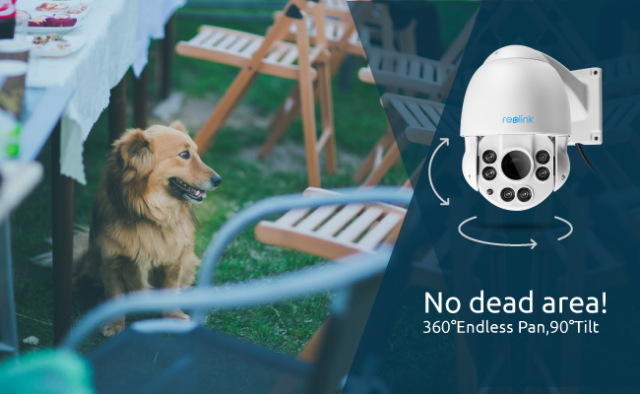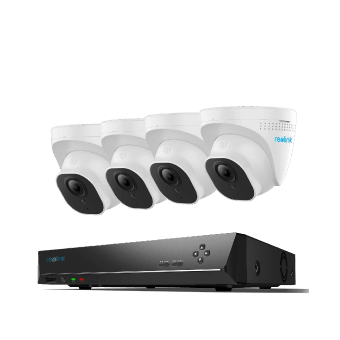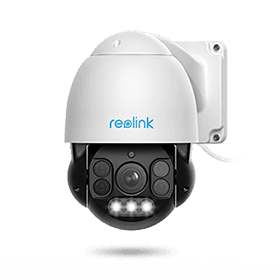Security Camera Blind Spots: How to Find and Avoid Them

Get Special Offers Now for Locksmith Services Call Us Now at 02081458426
A substantial obstacle encountered by observation devices is the attendance of areas with no vision, no matter their trait or price tag. This condition emphasizes the necessity for original tactics to handle and decrease areas with no vision for utmost observation protection. A recent occurrence highlights the susceptibleness proposed by areas with no vision in surveillance camera frameworks.
During a planned mission of observation before an intended taking, an aware person noticed a route without viewing cameras. Remarkably, there was no observable lens from that angle, and cameras in other places did not protect this area. Interestingly, numerous signs using protection cameras decorated this individual route. This circumstance sparks an essential inquiry: Are these symbols just expected to discourage achievable wrongdoers, or do they genuinely offer observation insurance for that blind location?
This event prompts reconsidering security camera installations in houses, workplaces, and food markets. The frequency of theft cases despite security cameras can partly be linked to areas cameras can’t see. These areas lessen the overall security of the location and safety of inhabitants. The existence of areas where cameras can’t see highlights meticulously preparing when set to ensure complete observation.
There are proficient tactics to handle surveillance cameras in hidden places and improve observation capacities. However, reducing hidden places necessitates an exact comprehension of their likely spots. To successfully remove these susceptibilities, preemptive actions must be taken to locate, assess, and correct hidden places amid the camera setup strategy.
How to Find Blind Spots in a Security Camera
Specific locations remain unseen by protection cameras due to their position outside the area perceptible to the device’s peripheral perspective. Since surveillance tools possess innate confines concerning their observation extent, accomplishing complete observation of an entire space with only a lone camera is impossible.
It’s significant to decide its exact perspective to pinpoint the unseen sections of your camera. The perspective refers to the viewpoint from which the camera can record scenes. This specification is affected by the focal point fitted to the camera. For example, cameras may have focal points with differing qualifications, like a fixed 4 mm focal point, a steady 6 mm or 8 mm focal point, or a variable focal point.
An optical device employing a permanently affixed lens of approximately 4 millimetres presents a perspective encompassing approximately 80 degrees. Consequently, any territories situated beyond this 80-degree field of observation are deemed areas lacking suitable surveillance where the optical device’s range proves deficient. These inadequately watched places epitomize portions unable to be appropriately tracked and documented by the optical device.

Doing practice runs with your security camera watching is a great way to spot unseen areas on your property. Ask a person you trust, like a friend or family member, to help test how well it sees. Have them act like a guest or an unwanted visitor. Tell them to come to your home from different directions, such as:
The front door
The dwelling has other access points, like the back patio or garage entranceway.
The glass panes of your home each allow natural light to flow inside. Positioned throughout the structure, these transparent panels are distributed so that illumination spreads evenly across rooms. Though made of a see-through substance, they divide the indoors from outside surroundings in a defined manner.
While the assigned person performs the motions, maintain a sharp observation of your camera’s continuous visual. Contemporary protection setups regularly permit distant checking through mobile gadgets, giving the benefit of immediate evaluation from anywhere. Investigating the different paths to get to the camera feed is vital. Remember that what might be discernible on a TV screen may not be as perceptible on a smartphone or different gadgets.
By carrying out these test drives, you can find gaps your camera may have overlooked, letting you refine its place and scope for strengthened protection.
How to Avoid Blind Spots on Security Cameras
Taking robust precautions to remove unseen areas from your monitoring machine’s view starts with an intelligent plan. Follow these early actions:
Register Views
Document pictures of the exact spots you aim to supervise utilizing your security cameras. Take these views from the precise spots where you intend to set up the cameras. This introductory step serves to accomplish the subsequent understandings:
Choose the correct optical element for maximum scope.
Consider optimum positioning for the imaging device.
Consider the breadth encompassed by one’s vision.
Experts leverage these visuals and the structure plan to pinpoint prime camera spots and pick the most suitable instruments. This thorough examination guarantees a complete view and reduces unseen zones. Moreover, you can use surveillance camera lens estimators to ascertain the essential lens measurement.
A multiple-lens system, if conditions permit, merits factoring in. This organization permits each device’s range to intersect with the scopes of other devices, successfully counterbalancing areas of obscurity. By tactically synchronizing the devices’ perspectives, one can notably boost protective observation.
Through diligently pursuing this process, you hone your skills to pinpoint and remedy weaknesses, thereby strengthening the general proficiency of your surveillance camera arrangement.

Tip 1: Firstly Focus on Location When It Comes to Eliminating Blind Spots
Guaranteeing the success of your protective steps in removing unseen areas relies on the trustworthiness of your instruments. Yet, a pivotal action to shield your possessions involves cautious preparation and calculated positioning of your recorders.
Seeking the counsel of an experienced specialist to direct the positioning of your home surveillance devices provides noteworthy benefits. This cooperative method meaningfully lessens the hazards linked to blind areas and probable harm caused by vandals or natural forces. Ultimately, this planned process achieves elevated confidence that your surveillance cameras are fulfilling their essential job of shielding your loved ones and belongings.
Tip 2: Consider Changing to a Wide-Angle Security Camera
Opting to situate observation devices methodically to lessen areas that can’t be seen, another capable plan is selecting a camera with an extensive perspective. Deciding on a device with a more comprehensive field gives benefits since it improves the potential to survey a broader scope of zones thoroughly.
A Panoramic Fisheye Security Camera
An ideal solution to think about is a complete circle panoramic wide-angle security camera. Unlike a standard unmoving IP camera, this kind of panoramic observation camera provides a total surrounding 360-degree encompassing see, successfully removing unseen zones. Significantly, huge stores like MegaMart, alongside numerous other retailers and food markets, have embraced these circular cameras as a preventive measure against theft.
A PTZ Surveillance Camera
Comprehensive cameras surpass their power to take away unnoticed areas by granting a whole perspective. Yet, these surveillance instruments can be expensive from public markets like Online, Greatest Purchase, or eBay. For individuals operating with narrowed finances, another choice to consider is a movable zoom digital camera, which offers equivalent benefits regarding comprehensive protection.
The Reolink RLC-823A monitoring device stands out for its power to watch over a vast region through its 360-degree pan and 90-degree elevation functions. Its means to independently pursue moving people or transports distinguishes it, confirming that no location stays devoid of observation. This lively tracking highlight stops the camera from concentrating on a single bearing, which may unprotect other territories.
To view the streaming recording and direct the camera’s position, you can conveniently install the Reolink program onto your phones. It allows you to watch over your selected areas from anywhere, regardless of location. With pan-tilt-zoom functions within your reach, you can maneuver the camera’s perspective as required, boosting your monitoring skills even when far away.

Tip 3: Consider the External Factors at Play to Minimize the Blind Spots of Your Camera
It bears repeating that accounting for how shifting light and dark impact security camera blind areas is paramount. This cognizance is critical for addressing blind areas, whatever the time of day or night.
Nevertheless, various additional outer influences deserve prudent examination. For example, swaying limbs owing to a burst of breeze can abruptly generate a region without vision. Throughout the heat of summer, a tree overflowing with leaves tends to block the early sunbeams, while in winter, the same tree, presently barren, together with the lower-angled sunlight, may offer an entirely altered difficulty.
It is essential to regularly observe these exterior conditions, not solely throughout the shifting year periods but ideally every month. This attentiveness permits remaining ahead of possible blind area problems brought on by elements like increasing plant life, fluctuating sunbeam angles, and climate-induced motions, guaranteeing continuous and trustworthy surveillance protection.
Tip 4: Eliminate Blind Spots by Making Your Camera Free from Vandalism
Environmental conditions are not the only potential cause of unexpected sight limitations in your security system. Devices that monitor surroundings could be compromised if they are easy to access for those intending harm, allowing vision to become obscured or gear to become impaired.
There may be times when your lenses are at risk of damage, so weighing the choice of cameras made to withstand harm is wise. Another thought could be rethinking altogether where your lens setups are put. By making early moves to handle possible problems and interference, the strength of your monitoring can be reinforced, and unseen areas can be decreased.
Frequently Asked Questions
How can I identify and eliminate blind spots in my security camera coverage?
To identify and eliminate blind spots, take photos from the planned camera locations. Determine the camera’s field of view (FOV) to understand its coverage. Professional advice and security camera lens calculators can assist. Consider wide-angle or panoramic cameras to provide comprehensive coverage, and explore multi-camera setups for overlapping views.
How do external factors impact security camera blind spots?
External factors like moving sunlight, wind-induced branch swaying, and changing vegetation can affect blind spots. Regularly monitor these factors, ideally every month, to ensure uninterrupted camera coverage. Adjust camera positions as needed to counteract these challenges and maintain consistent surveillance.
How can I prevent vandalism-related blind spots in my camera coverage?
Cameras vulnerable to vandalism risk obstruction or damage. Consider vandal-proof camera options for enhanced durability. Alternatively, reassess camera placement to minimize accessibility by intruders. Taking proactive measures against vandalism helps maintain clear camera views and minimizes the chances of blind spots.
How can a PTZ camera help avoid blind spots while on a budget?
A PTZ (Pan/Tilt/Zoom) camera offers an affordable alternative to panoramic cameras. For example, Reolink’s RLC-823A PTZ camera offers 360° pan and 90° tilt capabilities. It can automatically track movement and cover larger areas. Use the Reolink app to remotely monitor and control the camera’s orientation, even on a tight budget.


